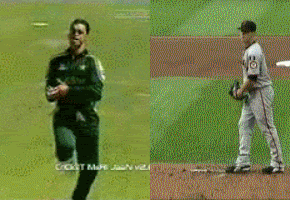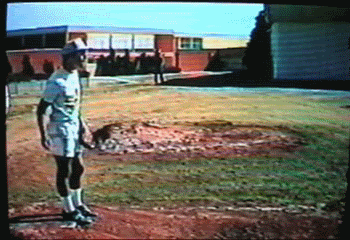XFactor-
Where did this leap style originate from, and why do you think we haven't seen a multitude of MLP doing this for the last 50 years
It appears to me to be a Lincecum style to the factor of "X".
Replies sorted oldest to newest
XFactor-quote:I'm not advocating the leap. Yeah, in the video he does it,
quote:Originally posted by BobbleheadDoll:
Pitchers don't get a running start.
quote:Originally posted by XFactor:
Here's a pretty decent vid for ya
http://www.youtube.com/watch?v=MZF8VUvumXw
http://www.youtube.com/watch?v=m4WuWu1scBY
First one is 89, second is 92.
quote:Originally posted by deemax:
Some things can be learned from cricket. It doesnt translate to pitching perfectly, but to poo poo it without taking it in doesnt make much sense either.
Here is an interesting video...
100.2 mph


quote:Originally posted by deemax:quote:Originally posted by BobbleheadDoll:
Pitchers don't get a running start.
Not actually running, but make no mistake.... the better pitchers absolutly get a running start.


quote:Originally posted by BobbleheadDoll:
I understand what you are saying but I don't call that a running start.
The supplied video of a cricket bowler is a running start.
quote:Originally posted by BobbleheadDoll:
I would also like to poit out to pain if he is reading that Lincecum clearly shows the dreaded downward L that he talks about.

quote:I do agree the pitching arm should stay in motion once put in motion but...do you really want to add extra variables early in the motion by encouraging them to go overhead ?
quote:Originally posted by BobbleheadDoll:
Now is he prone to injury ? Has he been injured?
quote:Originally posted by BobbleheadDoll:
I watched Carpenter for a few years. He rehabed here in St Catharines and I have seen him workout in person. His mechanics were solid. Some guys are prone to injury and some arne't. Good mechanics won't save them necessarily.
quote:Originally posted by BobbleheadDoll:
Pain I am sure that the coaches know what they are looking at.
quote:Originally posted by Midlo Dad:
First of all, as was discussed in a previous thread, TPG tends to confuse the downward L achieved on reachback with a similar arm position that can occur when the pitcher's reachback is nearly straight down, followed by his forming the "L" shape by pulling his hand up inside his elbow. The first habit is healthy and to be encouraged. The second habit is a recipe for injury, e.g., Mark Prior. Looking at photos in freeze frame tells you nothing because to evaluate the motion you'd have to see at what point in sequence the "L" shape was formed.
While Lincecum is by no means as smooth as the vintage Maddux clip, and the particular angle of this clip is not the best one to evaluate him from, as best I can tell he is in the proper downward L reachback position, and not the problematic downward L lift-up position.

quote:Originally posted by Yankeelvr:
#97...





quote:Originally posted by Yankeelvr:
...and then in #103 his elbow is above the axis of the shoulders


 309
309 310
310 311
311 312
312 313
313 314
314 315
315 316
316 317
317 318
318 319
319 320
320 321
321 322
322quote:Originally posted by BobbleheadDoll:
Your F 15 analogy is the same as a pitcher who throws for 30 years may break down. Everything has a limit even airplanes. If it flew for 30 years it is a great success.